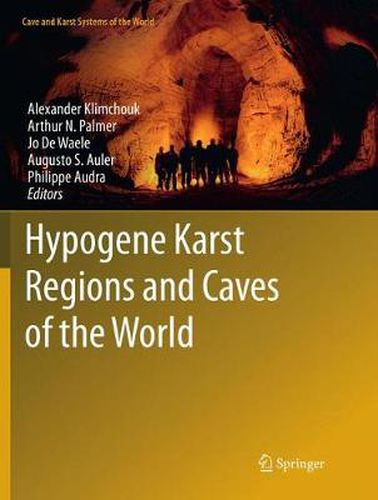Readings Newsletter
Become a Readings Member to make your shopping experience even easier.
Sign in or sign up for free!
You’re not far away from qualifying for FREE standard shipping within Australia
You’ve qualified for FREE standard shipping within Australia
The cart is loading…






This book illustrates the diversity of hypogene speleogenetic processes and void-conduit patterns depending on variations of the geological environments by presenting regional and cave-specific case studies. The cases include both well-known and newly recognized hypogene karst regions and caves of the world. They all focus on geological, hydrogeological, geodynamical and evolutionary contexts of hypogene speleogenesis. The last decade has witnessed the boost in recognition of the possibility, global occurrence, and practical importance of hypogene karstification (speleogenesis), i.e. the development of solutional porosity and permeability by upwelling flow, independent of recharge from the overlying or immediately adjacent surface. Hypogene karst has been identified and documented in many regions where it was previously overlooked or misinterpreted. The book enriches the basis for generalization and categorization of hypogene karst and thus improves our ability to adequately model hypogene karstification and predict related porosity and permeability. It is a book which benefits every researcher, student, and practitioner dealing with karst.
$9.00 standard shipping within Australia
FREE standard shipping within Australia for orders over $100.00
Express & International shipping calculated at checkout
This book illustrates the diversity of hypogene speleogenetic processes and void-conduit patterns depending on variations of the geological environments by presenting regional and cave-specific case studies. The cases include both well-known and newly recognized hypogene karst regions and caves of the world. They all focus on geological, hydrogeological, geodynamical and evolutionary contexts of hypogene speleogenesis. The last decade has witnessed the boost in recognition of the possibility, global occurrence, and practical importance of hypogene karstification (speleogenesis), i.e. the development of solutional porosity and permeability by upwelling flow, independent of recharge from the overlying or immediately adjacent surface. Hypogene karst has been identified and documented in many regions where it was previously overlooked or misinterpreted. The book enriches the basis for generalization and categorization of hypogene karst and thus improves our ability to adequately model hypogene karstification and predict related porosity and permeability. It is a book which benefits every researcher, student, and practitioner dealing with karst.